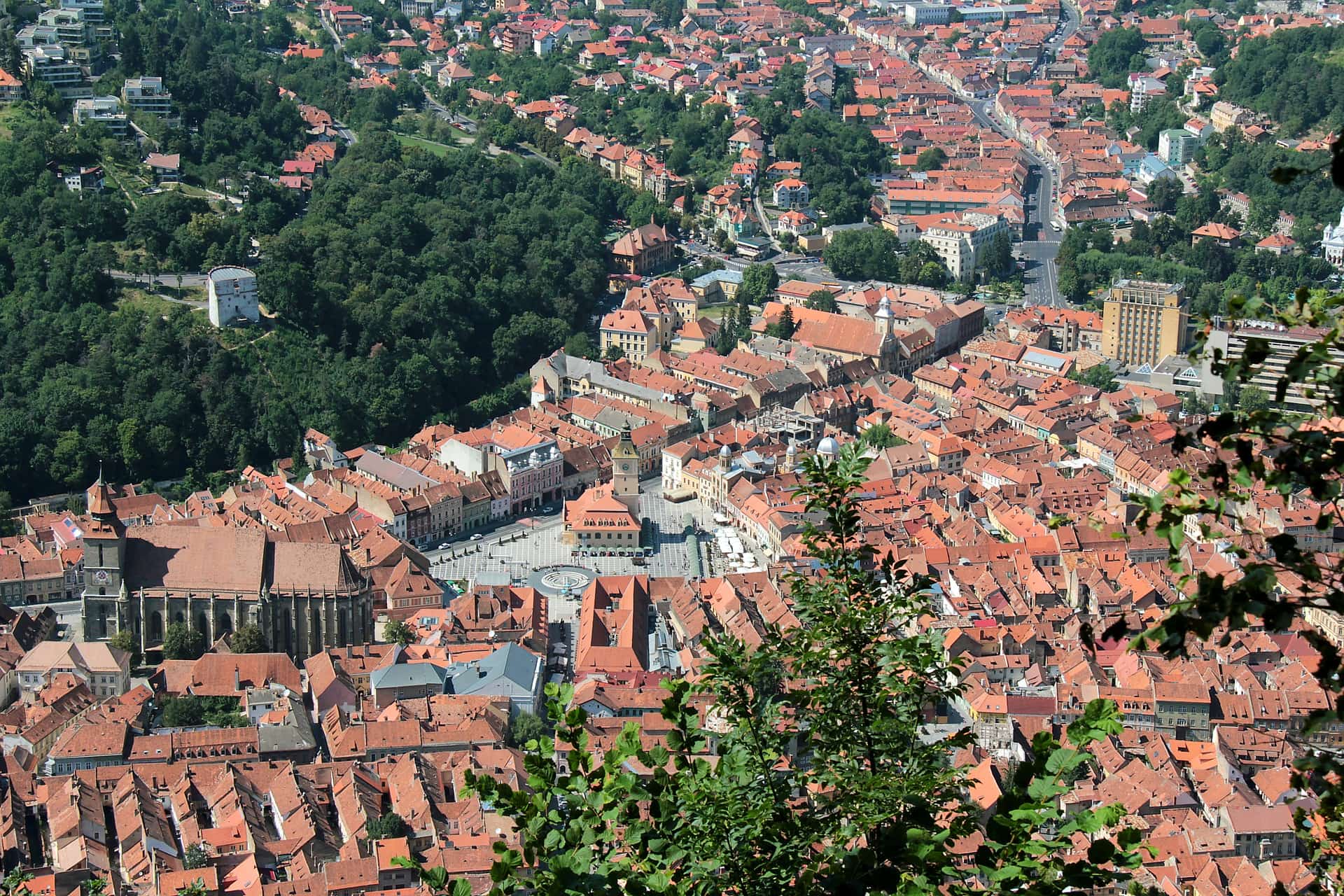Sibiu vs Brasov
If you’re visiting Transylvania, then you may be torn between visiting Sibiu and Brasov, arguably the two most beautiful cities in Romania. Both cities have a common heritage rooted in Saxon settlement and boast a uniquely medieval ambiance. Deciding between the two may prove difficult, though, because both cities have so much to offer. I’ve traveled in both cities and I’ve even lived in Sibiu for a period. Here’s what I’ve concluded:
For a stay of three days or more, Brasov is the better city to visit. Brasov is more tourist-friendly, boasts more day trip possibilities, and is closer to many natural and architectural landmarks than Sibiu. If you’re planning a brief visit of fewer than three days, however, then Sibiu is the better option. Sibiu is smaller than Brasov and its old town is less crowded and better-preserved. In just a couple of days, you can comfortably have a complete and well-rounded travel experience in Sibiu.
In this comparison guide, I’ll explore each city in detail and give the pros and cons of each destination. I’ll provide you a glimpse of the activities available in each city so that you can decide which city suits you best.
Sibiu
Population: 147k
Distance from Bucharest: 5.5-hour train ride
History:
The oldest parts of Sibiu were constructed during the 1100’s by Saxon settlers. The city’s fortified design provided a refuge against the imminent threat of Ottoman invasion and successfully fended off Ottoman advances on several occasions. For hundreds of years, Sibiu was the administrative center for Transylvanian Saxons living under the Habsburg Empire. Its influence in this region is hard to overstate, as Sibiu is the site of many of Transylvania’s first libraries, schools, and other important institutions.
Today, Sibiu remains an important part of the Romanian economy and a symbol for Romanian excellence and prosperity. Romania’s current president, Klaus Iohannis, is the former mayor of Sibiu and part of Sibiu’s German-speaking Saxon minority.
Things to do:
For tourists, the city’s charming medieval atmosphere, its unique baroque architecture, and its incredibly well-preserved old town make visiting this destination an unforgettable experience. Many of the buildings have eye-like dormers known colloquially as the “eyes of Sibiu” that give the city a quirky, one-of-a-kind atmosphere.
The city’s primary sightseeing attractions are its largest squares– Grand Square, Lesser Square, and Huet Square– which can be thoroughly explored in just two days. Each square is adorned with pastel buildings that house museums, cafes, and churches.
If you are interested in Romanian art, then the Brukenthal Palace and Art Museum, located on Grand Square, houses a wonderful Romanian art exhibit which can be viewed for just $4 USD. In addition, my favorite museum in all of Romania, the ASTRA National Museum Complex, is located in Sibiu and hosts wonderful exhibitions about Romanian culture.
At the middle of the fortified center sits an incredible Lutheran church, the Lutheran Cathedral of Saint Mary. The church is built in a distinctly Gothic style that echoes the motifs of Brasov’s Biserica Neagra (Black Church).
Conveniently, the entire city can be visited by foot, with few exceptions. This is great for budget travelers because you won’t need to rent a car or pay for bus fares to see the city. Sibiu’s train station is located adjacent to the Old Town, so visitors who arrive by train won’t need to navigate public transit to get to the city’s main attractions.
Visit If:
- You love small-scale, quaint architecture
- You like walking everywhere
- You prefer quiet, authentic towns to big cities
- You don’t plan on hiking or going into nature
- You are travelling on a budget
- You want to visit the National ASTRA Museum
Don’t Visit If:
- You prefer structured tourist activities
- You prefer action and thrill-seeking
- You’re planning a stay of more than three days
- You’re interested in taking day trips to nearby landmarks
- You like to ski
Also See: My Guide to Sibiu
Brasov
Population: 275k
Distance from Bucharest: 2.4-hour train ride
History:
Constructed nearly a hundred years after Sibiu, Brasov was originally settled by Teutonic Knights, Christian crusaders sanctioned by the Roman Empire to ensure the safety of Christian pilgrims to the Holy Land.
Throughout history, Brasov has proven an important cultural and technological hub for the entire region. It is here that Aurel Vlaicu, a Romanian aviation pioneer, launched his first test flights. It is also in Brasov that initial protests against the communist regime of Nicolae Ceausescu took place, ending in the collapse of the regime in 1989 and the installation of democracy in Romania.
Things to do:
Present day Brasov is marked by its stunning architecture and its well-preserved fortification walls and towers. Like Sibiu, Brasov’s old town is the hub of its cultural attractions, museums, and churches. The primary feature of the old town is Biserica Neagra, or the Black Church. The church’s Gothic design and its dominance in the city’s main square lend the city a sense of place and identity that are uniquely Transylvanian.
While both cities are located within the Carpathian Mountain Range, the Carpathians seem to loom in the distance of sleepy Sibiu whereas Brasov is planted firmly at the mountains’ foothills. From the city’s main square, Council Square, the mountains make for a dramatic backdrop and add to the town’s ambiance. Adventurous travelers will find more to do in Brasov, as the mountains can be visited by cable car and the forest hosts hiking trails and zip line courses.
From Brasov you can easily visit several impressive castles, fortresses, and monuments. Bran Castle, also called Dracula’s Castle, is a mere 40 minute drive from Brasov. Also nearby are Peles Castle (1.5 hours) and Rasnov Citadel (25 minutes). If your idea of Transylvania includes castle dungeons and taking a stroll through Dracula’s crib, then Brasov is clearly the destination for you.
Not only is Brasov closer to many top notch tourist destinations, the city itself is also better at catering to tourists. Brasov is close to popular ski resorts and is still flooded with tourists during the Winter months. While Sibiu clears out during the off-season, Brasov attracts tourists year-round.
In Brasov, you’ll find more guided tour packages, better amenities, and more structured experiences. This may be a good or bad thing, depending on how you prefer to travel. If you prefer off-the-radar destinations with fewer tourists, then you may prefer Sibiu to Brasov; otherwise, Brasov is more convenient.
Visit If:
- You prefer structured tourist activities
- You prefer cities to sleepy towns
- You want to see a lot of castles
- You want to get out in nature
- You are a thrill-seeker
- You like skiing
- You want to see the Carpathians up-close
Don’t Visit If:
- Large crowds of tourists aren’t your thing
- You prefer locals-only destinations
- You prefer authenticity over grandiosity
- You only have a couple of days to see everything the city has to offer
Is Brasov or Sibiu a Better Destination?
Full disclosure: I lived in Sibiu, and it’s a city I am in love with. That said, which city you will enjoy most depends on what experiences you are seeking. If you are someone who enjoys action and large-scale attractions, loves to get out in nature, and doesn’t mind wading through large crowds, then Brasov is a great destination for you. If, like me, you prefer cities with a locals-only vibe and have a strong preference for authenticity, then Sibiu should be at the top of your list.
Transylvania is an amazing place with a rich history and some of the world’s most beautiful places. Both Brasov and Sibiu boast incredible architecture and a beautiful ambiance. No matter which city you choose, I am positive you will fall in love with this amazing part of the world (but seriously, try to choose both if at all possible).
Cheers!

